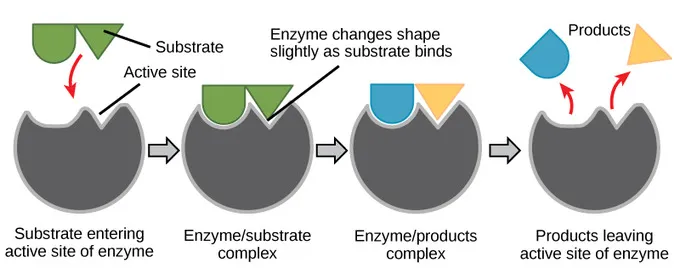Enzyme action
Steps of enzyme action:
Substrate must collide with the active site of an enzyme in the correct orientation and with enough energy.
Substrate binds to active site to form an enzyme-substrate complex (ESC).
Substrates are converted into products.
Products are released so the active site is available to bind to another substrate.
There are two models used to represent enzyme action:
Lock and key model

Induced fit model

The main difference between the 2 models is that in the lock and key model, the shape of the active site never changes however in the induced fit model, the substrate binding to the active site causes its shape to change. The induced fit model is more widely accepted as it is supported by more recent evidence.
The energy required to get a reaction to start is called the activation energy. Enzymes work by lowering the activation energy, so less energy is required for the reaction to take place. Therefore there will be more frequent successful collisions between the substrate and enzyme active site and the rate of reaction will increase.
Ways in which enzymes work:
R groups at the active site may have opposite charges to substrate to assist binding.
Active site changes shape as the substrate bind so that it is complementary in shape to the substrate in the ESC.
Substrate changes shape as it binds to active site which strains the bonds in the substrate so the break more easily.
Enzyme stabilises the transition state which lowers the activation energy required to form the transition state.
Enzyme provides an alternative pathway for the reaction with an alternative transition state which has lower energy.